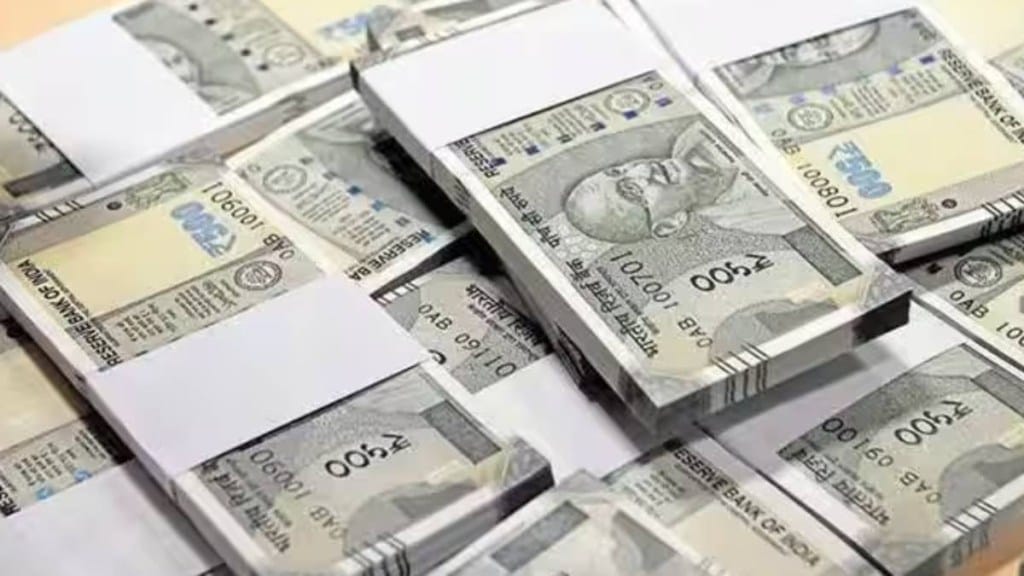Finance Minister Nirmala Sitharaman, during her Interim Budget speech in February, announced that the revised fiscal deficit target for FY25 was set at 5.1 per cent of the Gross Domestic Product (GDP).
She had said that the revised fiscal deficit was at 5.8% and that the target was to reduce the fiscal deficit to below 4.5% of the GDP in 2025-26 (FY26).
“We are committed to the path of fiscal consolidation, aiming to reduce the fiscal deficit below 4.5 per cent by 2025-26. The fiscal deficit in 2024-25 is estimated to be 5.1 per cent of GDP, adhering to this path,” Sitharaman had said in her Interim Budget speech.
This article will delve into the fiscal deficit data during the tenure of the Modi government’s term, which began from 2014. But first, a little on what is fiscal deficit and how is it calculated?
What is fiscal deficit?
Fiscal deficit is a fundamental concept in economics that helps us understand the financial health of a government. Simply put, it refers to the difference between what the government earns (revenue) and what it spends (expenditure) in a fiscal year. When the government spends more money than it earns from taxes and other sources, it incurs a fiscal deficit.
For example, if a government’s total earnings (revenue) from taxes, fees, and other sources amount to Rs 100 crore in a year, but its total spending on infrastructure, salaries, subsidies, and other expenses is Rs 120 crore, the fiscal deficit would be Rs 20 crore. This deficit indicates that the government needs to borrow Rs 20 crore to cover its expenses beyond its earnings.
India’s fiscal deficit in May 2024
India’s fiscal deficit stood at 16.54 lakh crore in FY24 as against the target of Rs 17.86 lakh crore, according to the data released by the Comptroller General Accounts.
The Centre’s fiscal deficit stood at 5.6 per cent of GDP in FY24, below the revised estimate of 5.8 per cent.
Fiscal deficit data from 2013-14-2024
Here’s a timeline narrative of the fiscal deficit in India from 2013-14 to the present:
After years of the UPA’s rule, the Narendra Modi-led NDA government came into power and assumed office in May 2014. In 2013-14, India’s fiscal deficit stood at 4.5% of GDP.
By 2014-15, the fiscal deficit had reduced marginally to 4.1% of GDP, as the new government continued its efforts towards fiscal discipline amidst global economic uncertainties.
The following year, in 2015-16, it further decreased to 3.9%, indicating progress in fiscal management strategies and economic stabilization efforts.
In both these years, the actual deficit-to-GDP ratio was the same as the budgeted one.
In 2016-17, the fiscal deficit saw a slight uptick to 3.5% of GDP, reflecting increased public expenditure and economic reforms aimed at enhancing growth prospects. This trend continued into 2017-18, with the deficit remaining at 3.5% of GDP.
The fiscal deficit rose to 3.4% of GDP in 2018-19. In 2019-20, it widened to 4.6% of GDP due to subdued revenue growth and higher expenditure commitments, exacerbated by the economic impact of the COVID-19 pandemic.
During 2020-21, the fiscal deficit surged to 9.3% of GDP, reflecting unprecedented spending on health and economic relief measures amidst the pandemic-induced economic downturn. In absolute numbers, the fiscal deficit was Rs 18,21,461 crore.
This was lower than the 9.5 per cent estimated by the Finance Ministry in the revised Budget estimates, according to data that was revealed by the Controller General of Accounts.
As the economy began to recover in 2021-22, the deficit narrowed to 6.9% of GDP, supported by improving revenue collection and prudent expenditure management.
The deficit declined to 6.8 percent in 2021–22, 6.4 percent in 2022–23, and 5.8 percent in 2023–24 (revised estimates).
Primary deficit estimates were 5.7 percent in 2020–21, 3.3 percent in 2021–22, 3 percent in 2022–23, and 2.3 percent in 2023–24.
Revenue Deficit
Revenue deficit refers to the shortfall or gap between a government’s total revenue receipts (income from taxes, fees, etc.) and its revenue expenditures (expenses on day-to-day activities like salaries, subsidies, interest payments, etc.).
It indicates that the government is spending more on regular operational expenses than it is earning from its regular sources of income. Revenue deficit does not include borrowings or capital receipts, focusing solely on the government’s operational financial health.
For example, if a government expects to receive Rs 1,000 crore from taxes and other revenues but ends up spending Rs 1,200 crore on salaries, pensions, subsidies, and other routine expenses, it would have a revenue deficit of Rs 200 crore.
Effective revenue deficit goes a step further by excluding revenue expenditures that create assets or reduce liabilities. It specifically targets revenue expenses that do not contribute to capital formation or long-term development.
In the interim Union Budget, Revenue deficit in 2024-25 is targeted at 2% of GDP. This is lower than the revised estimate of 2.8% in 2023-24.
The Revenue deficit in 2023-24 was targeted at 2.9% of GDP, which is lower than the revised revenue deficit of 4.1% in 2022-23.
Here’s a timeline from 2013:
The actual revenue deficit for the year 2013-14 was Rs 3,60,311 crore which works out to 3.2% of GDP. The Effective Revenue Deficit, which is the revenue deficit less grants for creation of capital assets, was budgeted at Rs 2,05,182 crore in 2013-14 i.e. 1.8% cent of GDP.
In 2014-15, the revenue deficit was 2.9% while effective revenue deficit was 1.9% of GDP.
In 2015-16 to 2018-19, the revenue deficit and effective revenue deficit stood at 2.5% and 1.5%, 2.1% and 1%, 2.6% and 1.5%, 2.4% and 1.4% respectively.
It surged to 3.3% and 2.4% in 2019-20, while in 2020-21 it rose to 7.3% and 6.2%.
From 2021-22 and in 2022-23, the revenue deficit and effective revenue deficit stood at 4.4% and 3.3%, 3.9% and 2.8% respectively.

